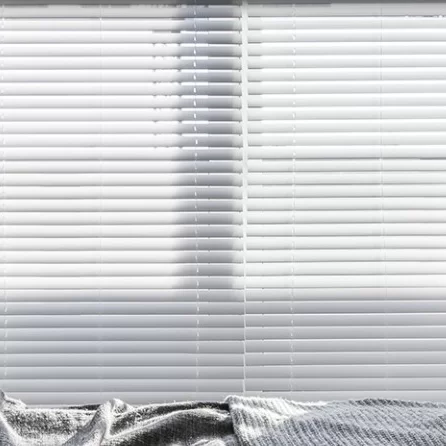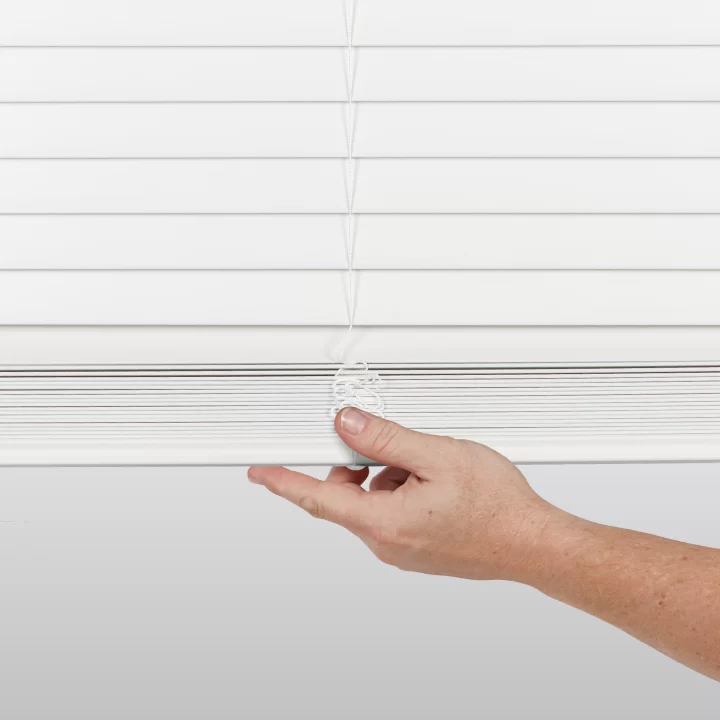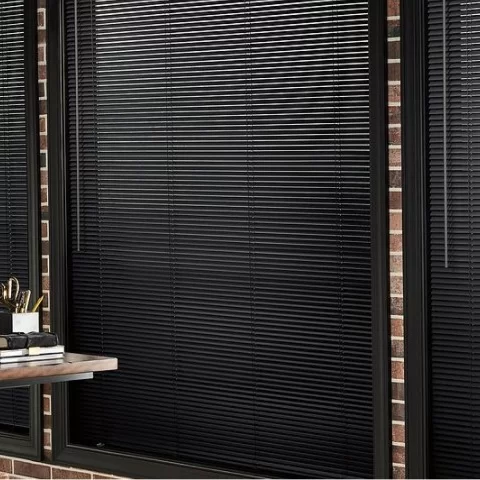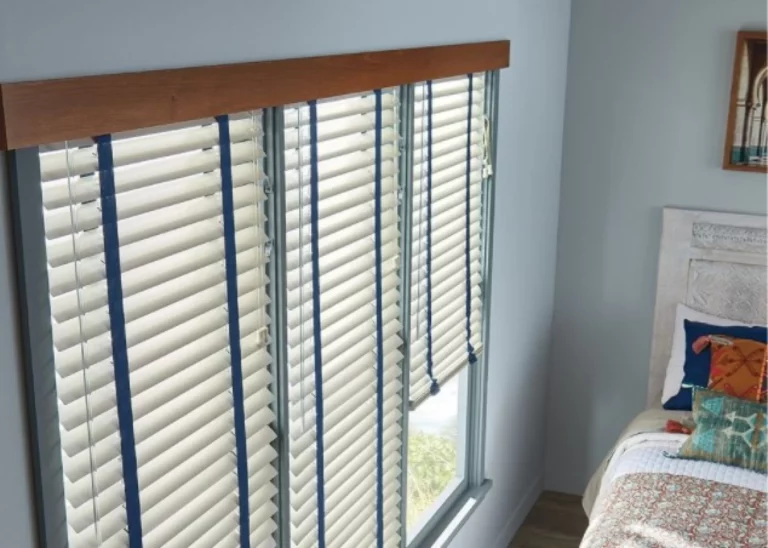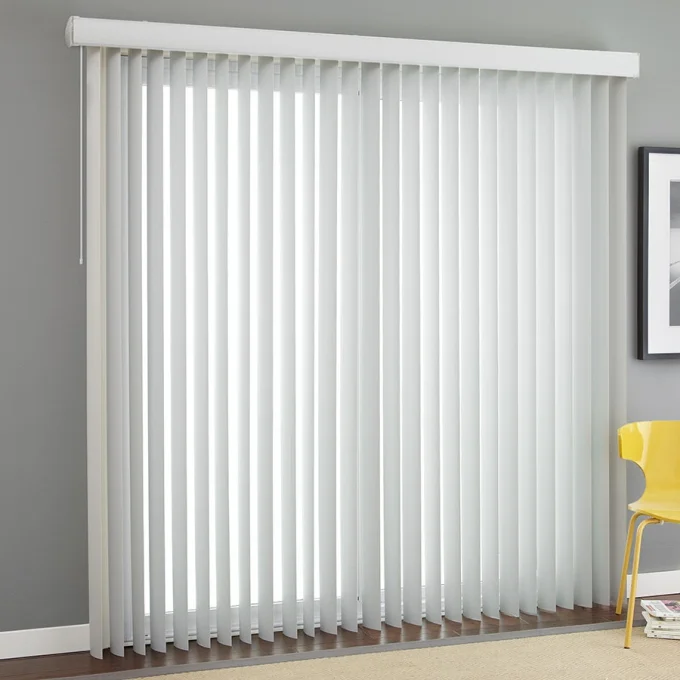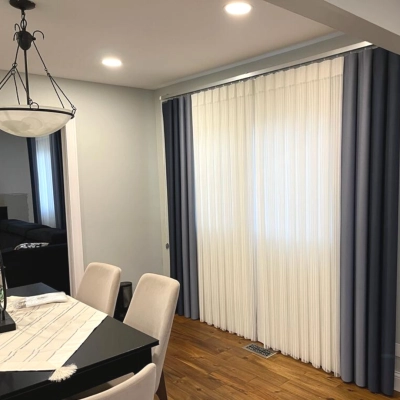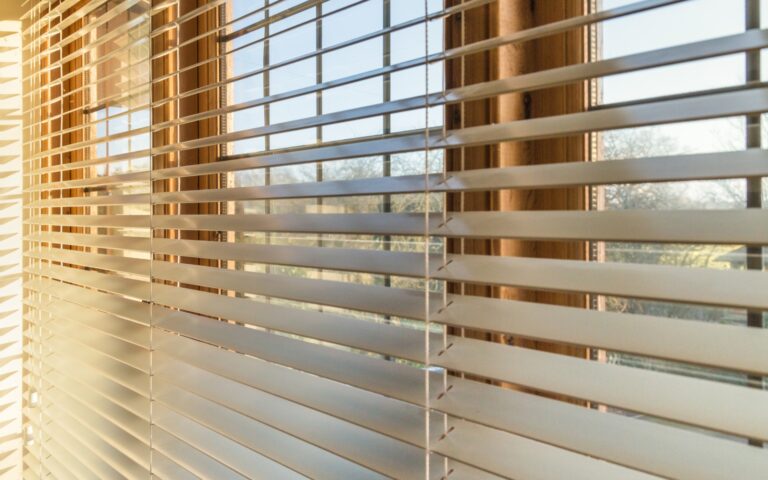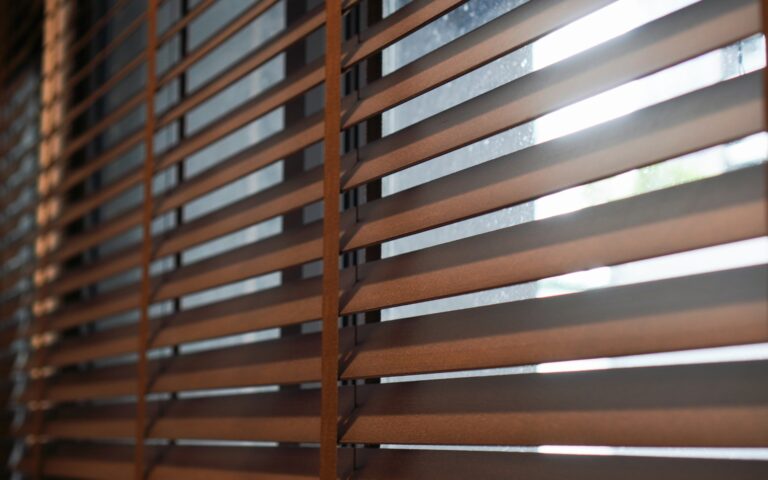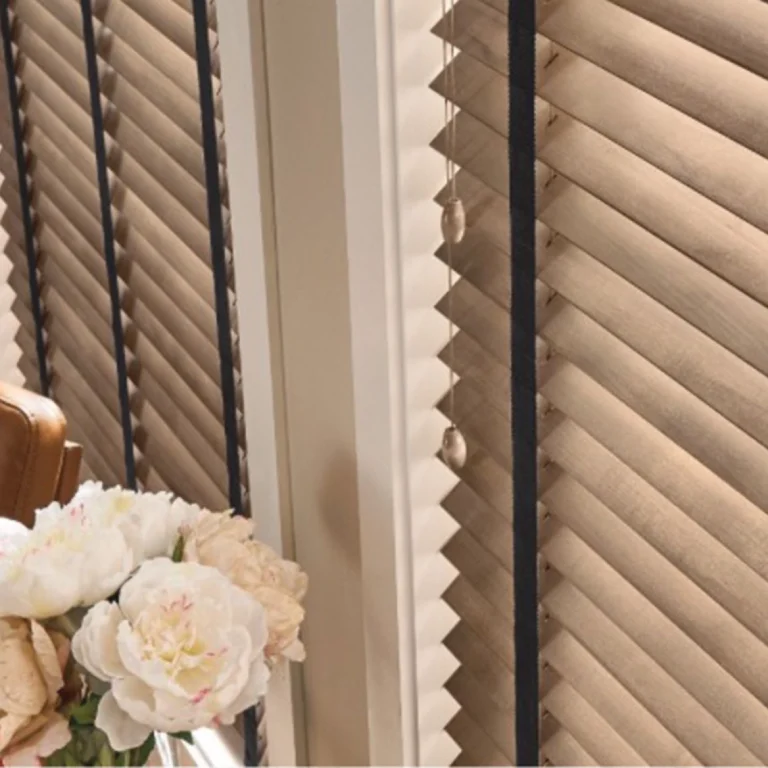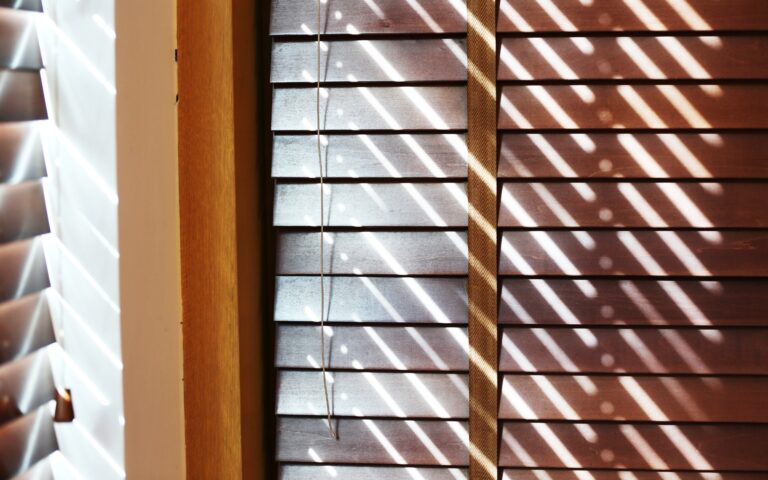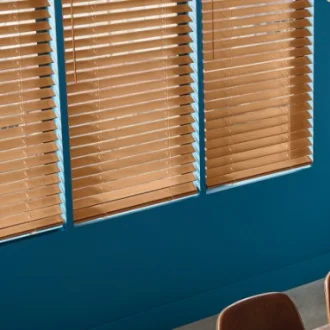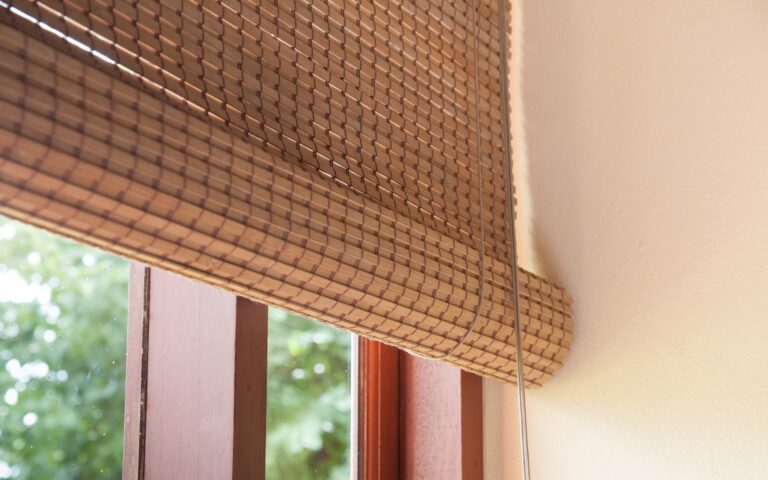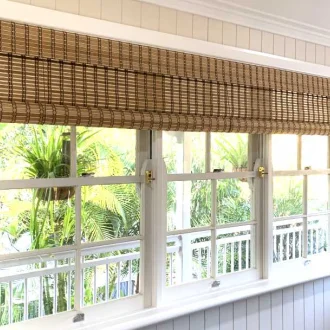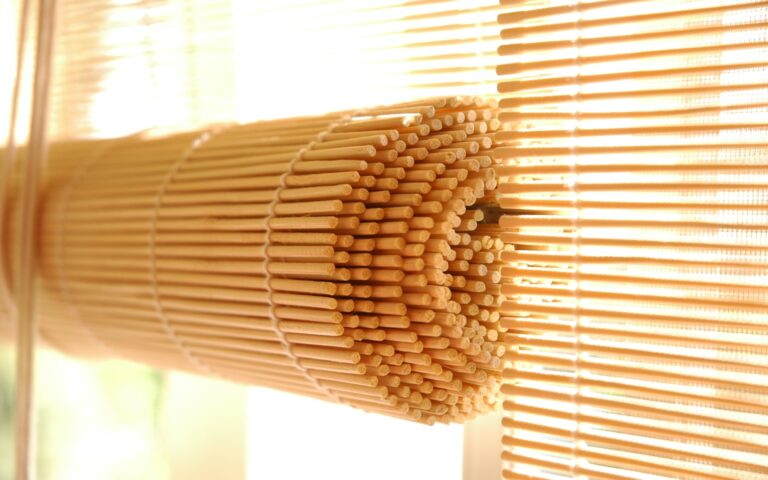Beyond Ordinary Windows: Designer Blinds in Chicagoland
Perfect Light Control for Every Room
Create the ideal atmosphere in your home with blinds designed for Chicago living. Easy light control, enhanced privacy, and energy efficiency in one beautiful package.
Blinds
Control light perfectly with our premium blinds collection. Choose from wood, aluminum, or faux options for precise adjustments.
Drapes
Add elegance with our custom drapes. Beautiful fabrics and designs make any room feel cozy and welcoming.
Shades
Experience smooth operation with our quality shades. Clean lines and reliable light filtering perfect for modern homes.
Shutters
Style your home with durable shutters. Classic style provide maximum light control, insulation, and lasting architectural appeal.
Faux Wood Blinds
Get the beautiful look of real wood without the cost or maintenance. Our faux wood blinds from Marqi Blinds Window Fashions resist moisture, making them perfect for kitchens and bathrooms. Easy to clean and built to last, these quality blinds offer excellent light control and privacy for any room in your Chicago home.
Aluminum Blinds
Resist dust, stains, and scratches while providing excellent light control for your windows. Marqi Aluminum Blinds come in warm tones and textures to match any room style. Perfect for kitchens, offices, and busy areas where easy cleaning and reliable performance matter most.
Vertical Blinds
Perfect for sliding doors and wide windows, vertical blinds offer smooth operation and excellent light control. These window treatments come in numerous colors and materials to complement any room. Vertical slats stack neatly to one side for unobstructed views when opened.
Wood Blinds
Add natural warmth and beauty to any room with real wood window treatments. Marqi Blinds Wood Blinds are made from quality North American hardwood in various stains and finishes. These classic blinds provide natural insulation while bringing timeless style and character to your home.
Custom Natural Bamboo Blinds
Control light naturally with eco-friendly bamboo window treatments that bring warmth to any space. Made from quality bamboo materials that are easy to clean and maintain. These custom blinds install easily and operate smoothly while adding natural texture and style to your home.

Start Living with Better Windows
From basic to breathtaking. Discover how the window treatments transform any space. Schedule your consultation and see what’s possible for every room.
All About Blinds: Your Complete Guide to Window Solutions
When you walk into a room and notice how perfectly the light filters through the windows, creating just the right ambiance, there’s a good chance you’re seeing quality blinds at work. Unlike heavy curtains that collect dust or flimsy shades that break after a few months, quality blinds give you real control over your space while looking great year after year.
Let’s dive into everything you need to know about window blinds. Whether you’re upgrading your current windows or moving into a new home, blinds offer practical solutions that adapt to your daily needs while adding style to any room.
What Are Blinds
Blinds are window treatments made up of individual slats that you can adjust to control light and privacy exactly how you want them. You can tilt the slats to let in just the right amount of light, or close them completely when you need total darkness or privacy. The slats come in different materials like wood, aluminum, vinyl, or fabric, and they operate through simple cord systems, wands, or motorized controls.
The beauty of blinds lies in their flexibility. Horizontal blinds have slats that run parallel to the floor and work great for most windows. Vertical blinds hang perpendicular to the window frame and are perfect for sliding doors or really wide windows.
Why Homeowners Choose Blinds
Blinds have become incredibly popular because they solve so many common window problems while looking great in any home.
Perfect Light Control
You get precise control over how much light enters your room throughout the day. Tilt the slats upward to bounce light off your ceiling for soft, ambient lighting. Angle them downward to block glare from your computer screen. Close them completely for movie time or afternoon naps. Reflective blinds can even reduce heat by up to 45% when closed during sunny afternoons, which means lower cooling bills.
Privacy That Works for You
Unlike curtains that are either open or closed, blinds let you adjust privacy levels gradually. You can block street-level views while still seeing the sky above, or prevent neighbors from looking in while maintaining your view of the garden. It’s like having adjustable privacy that changes with your needs.
Energy Efficient
Quality blinds act like extra insulation for your windows. Cellular blinds create air pockets that can reduce heat transfer by up to 40%. Wood and faux wood blinds add thermal mass that helps keep rooms comfortable year-round. During winter, you can position blinds to capture solar heat, and in summer, they reflect heat away before it heats up your home.
Easy to Keep Clean
Forget about taking down heavy curtains for washing. Most blinds just need a quick dusting once a week and an occasional wipe with a damp cloth. Anti-static treatments on many modern blinds actually repel dust, so they stay cleaner longer.
Types of Blinds for Every Room
Each style has its sweet spot where it works best, so let’s break down your options.
Faux Wood Blinds
These give you the beautiful look of real wood without the maintenance headaches. Made from durable synthetic materials, they won’t warp in your bathroom or kitchen like real wood might. They cost about half what real wood blinds do, come in tons of colors and finishes, and handle humidity like champions. Perfect for any room where moisture might be an issue.
Aluminum Blinds
Your budget-friendly workhorses that can handle just about anything. They’re lightweight, resist dents and scratches, and their reflective surface can bounce away up to 80% of incoming heat. Great for kids’ rooms, offices, or anywhere you need something practically indestructible. They clean up easily and come in more colors than you might expect.
Wood Blinds
When you want that warm, natural elegance that makes guests notice your windows. Real wood provides excellent insulation, and each blind has unique grain patterns that add character to your room. You can stain them to match your existing woodwork or choose from dozens of paint colors. They’re an investment, but they add serious style points to any space.
Vertical Blinds
Built specifically for sliding glass doors and wide windows. The vertical vanes stack completely to one side when you want an unobstructed view, and you can rotate them for privacy without blocking all your light. They come in fabric, vinyl, or aluminum, with fabric offering the most color and pattern choices.
Mini Blinds
These feature narrow 1-inch slats that give you precise light control without visual bulk. They’re perfect for smaller windows or anywhere you want a clean, uncluttered look. The smaller slats mean you can make tiny adjustments that create big changes in light and privacy levels.
Bamboo Blinds
Eco-friendly option that brings natural texture and warmth to your space. Bamboo is naturally renewable and creates beautiful, diffused light that gives rooms a peaceful, organic feeling. Each blind is unique due to bamboo’s natural variations, and they work especially well in casual or nature-inspired rooms.
Smart Technology Changes Everything
Technology has transformed blinds from simple window coverings into convenient home automation features.
Motorized Systems
Imagine adjusting your blinds without getting off the couch or opening your bedroom blinds while still in bed. Battery-powered motors can be added to most blinds without any electrical work, and the batteries typically last 6-12 months. Some even have solar panels to keep them charged indefinitely.
Hard-wired systems connect to your home’s electrical system for unlimited power and can include backup batteries for power outages.
Smart Home Integration
Connect your blinds to Alexa, Google Home, or Apple HomeKit for voice control. Set schedules so they open gradually in the morning like a natural sunrise, or close automatically when you leave for work. Some systems even learn your preferences and adjust automatically based on weather, time of day, or room temperature.
Safety Benefits
Motorized and cordless blinds eliminate the safety risks that come with traditional cords. This is especially important in homes with young children, where corded blinds can pose serious safety hazards. Remote controls can be stored safely away while still giving adults easy control.
Choosing Blinds for Each Room
Different rooms have different needs, so here’s how to match blinds to your spaces.
Bedrooms
You want maximum darkness for good sleep, so look for blackout or room-darkening options. Cellular blinds provide excellent insulation and noise reduction. Motorized controls are fantastic here. You can open blinds gradually in the morning or close them without getting up at night.
Kitchens
Go for easy-to-clean materials that handle heat and moisture. Aluminum and faux wood blinds resist grease and steam while cleaning up easily. Avoid real wood near stoves where heat and moisture can cause warping.
Bathrooms
Moisture resistance is key, so stick with aluminum, vinyl, or faux wood. These materials won’t develop mold or warp from shower steam. You still want good light control and privacy, but prioritize materials that can handle humidity.
Living Rooms
You need flexibility for different activities throughout the day. TV watching, reading, entertaining. Wood blinds add elegance, while aluminum or vinyl work great with contemporary furniture. Consider how much privacy you need based on your windows’ location.
Installation and Maintenance
Getting blinds installed correctly ensures they’ll work properly and last for years.
Professional vs. DIY
For standard windows with straightforward installations, many homeowners successfully install blinds themselves. Manufacturers include detailed instructions and mounting hardware. However, consider professional installation for expensive blinds, multiple windows, motorized systems, or if you’re not comfortable with tools.
Professional installers handle measurements, deal with irregular windows, and provide warranties on their work. They’re especially valuable for custom sizes or complex installations.
Keeping Them Clean
Weekly dusting with a microfiber cloth or vacuum brush attachment keeps them looking fresh. For deeper cleaning, wipe slats with a slightly damp cloth and mild soap solution. Wood blinds benefit from occasional conditioning with appropriate wood care products.
Different materials have different care needs, but all blinds should be completely dry before operating after wet cleaning.
Blinds Installation Tips
Accurate measurements are crucial. Measure twice, order once. Decide between inside mount (clean, integrated look) or outside mount (makes windows appear larger). Consider your window’s depth, squareness, and any obstacles that might affect installation.
Blinds offer an excellent combination of style, function, and value for any home. They give you precise control over light and privacy, help with energy efficiency, and require minimal maintenance. With today’s variety of materials, styles, and smart features, you can find blinds that perfectly match your needs and enhance your living space for years to come. Take your time choosing the right style for each room, and don’t hesitate to get professional help with measurement and installation.
Beautiful Windows Begin Here
Latest Blog Posts
Best Kitchen Cabinet Parts for Long-Lasting Quality
The Effects of Humidity and Heat on Kitchen Cabinets: Know It All
The Truth on Medium-Density Fiberboard for Cabinets
Dealing with Empty Space on Top of Kitchen Cabinets
Our Brand Partners



























































